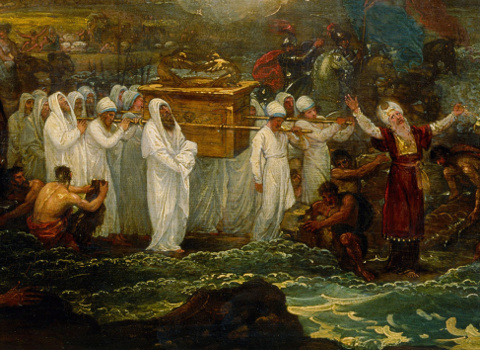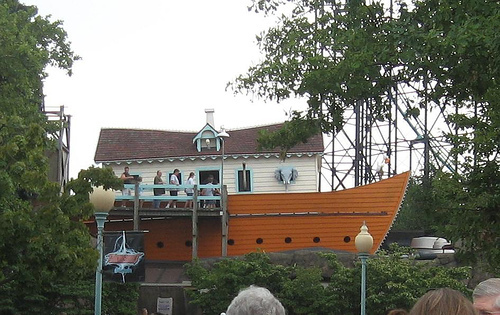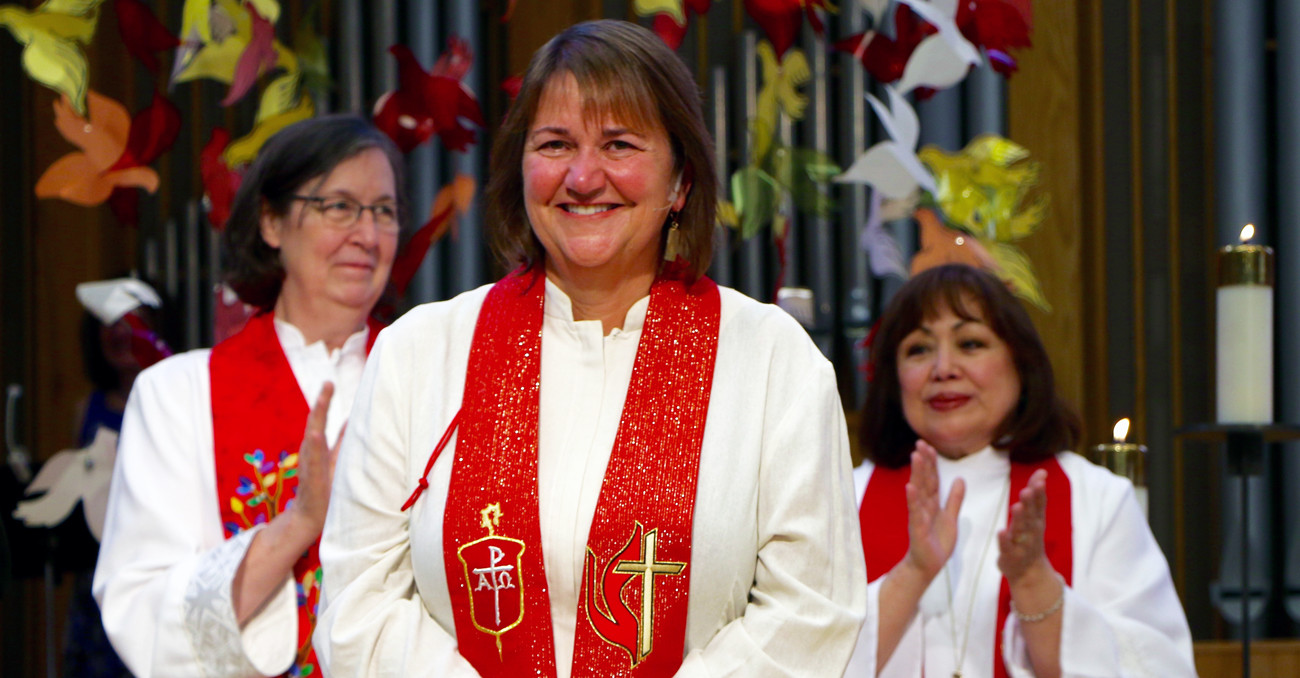 Kenneth Ham is a famous creationist–that is, he believes that Genesis presents a scientifically and historically accurate depiction of the world’s beginnings and early days. This applies, not only to the creation account in Genesis 1, but to the flood account in Genesis 6–9. He is now completing a reconstruction of Noah’s ark in northern Kentucky:
Kenneth Ham is a famous creationist–that is, he believes that Genesis presents a scientifically and historically accurate depiction of the world’s beginnings and early days. This applies, not only to the creation account in Genesis 1, but to the flood account in Genesis 6–9. He is now completing a reconstruction of Noah’s ark in northern Kentucky:
The ark stretches one-and-a-half football fields long, rises as high as a seven-story building and is said to be the largest timber-frame building in the world. Mr. Ham is betting it will become an international pilgrimage site, as well as a draw for the curious, the seculars and even the skeptics.
“The reason we are building the ark is not as an entertainment center,” Mr. Ham said in an interview in a cabin overlooking the construction site. “I mean it’s not like a Disney or Universal, just for anyone to go and have fun. It’s a religious purpose. It’s because we’re Christians and we want to get the Christian message out.”
But is Mr. Ham’s ark, as he and his supporters claim, an accurate depiction of the ark as described in the biblical narrative? I will not quibble about materials–after all, no one now has any idea what gopher wood is (the word appears only in Gen 6:14). But based on pictures of Ham’s structure, it is a huge boat: it clearly has a bow, a stern, and a keel. That is a problem, since the Hebrew word for Noah’s structure is not ‘oniyah, sephina, or any other Hebrew word meaning “ship” or “boat,” but tebat, a loanword from the Egyptian tbt, meaning “chest.”

The ancient translations of Jewish Scripture into other languages tell us what those early interpreters of the text thought Noah was to build. None of them use a word meaning “boat” to translate tebat. All of them use words meaning “box.” So, the Septuagint, the Greek translation of Jewish Scripture, translates tebat as kibotos, or “box.” This is the same term the Septuagint (for example, Exod 25:10, 14, 21) and the Greek New Testament (Heb 9:4; Rev 11:19) use for the Ark of the Covenant–although the Hebrew word used for that structure is ‘aron (also meaning “box”).
Likewise, in the Aramaic Targum, tebat is rendered as tebo (“box”), and in the Latin Vulgate, it is rendered as arca (“box”)–which is the source for the KJV rendering “ark,” followed by most English translations. So too, in Middle Hebrew, from after the biblical period, tebat means a cupboard or a chest.
In short, Noah is told to build, not a boat, but a floating box–something on which all of the versions seem to agree. This explains why nothing is said about tapering the hull, or laying down ribs or a keel. Noah is instead instructed to build a huge rectangular structure:
This is how you should make it: four hundred fifty feet long, seventy-five feet wide, and forty-five feet high (Gen 6:15).
There are only a few elaborations given to this plain structure. Noah is told to leave a one-foot (actually, one-cubit) gap beneath the roof, presumably for light and ventilation. He is also told to cut a door into one side of the box, and to construct two stories inside it (Gen 6:16).


In short, Mr. Ham’s ark is not an “accurate” depiction of Noah’s ark. It is an interpretation, shaped not only by the text, but also by our expectations of what the ark is supposed to look like. If Mr. Ham’s ark did not look as it does, if it was instead the big rectangular box the text describes, no one would recognize it. Numerous details not present in the biblical text at all feature in Mr. Ham’s ark, not only outside, but inside. For example, this ark contains animatronic giraffes with necessarily short necks, as well as juvenile dinosaurs. Certainly, these are not mentioned in the biblical narrative! However, they are placed inside Mr. Ham’s ark because he is certain that they must have been there.
This matters because Mr. Ham and his supporters generally deny that they are engaged in interpreting the text at all. They insist that they are preserving the Bible’s authority by simply presenting what the Bible says. When it comes to the appearance of a reconstructed Noah’s ark, this claim really doesn’t make that much difference: no one is harmed by whether or not Mr. Ham’s ark has a keel. But when our reading of Scripture leads us to marginalize and exclude others, even entire groups, then the claim that we own “the plain truth” of Scripture matters a great deal.

Last week, the Western Jurisdiction of the United Methodist Church elected Karen Oliveto, a married lesbian, as bishop. Objections have been raised to her election and consecration from across the church–not because she is married, or a woman, which would disqualify her in some Christian circles, but because she is in a same-sex relationship. While many of those objections are based on United Methodist polity and church law, undergirding them is the assumption that LGBTQ persons who live out that identity by marrying are sinners, because the plain teaching of Scripture says so. To say otherwise is to deny the authority of Scripture.
I have written elsewhere (see especially my blogs from here to here) about the various biblical texts cited in this conversation, and explained why I do not believe that they compel us to regard same-sex relations as inherently sinful, or LGBTQ persons as sinners. Here, however, I will only say that if “the Bible says so” was enough for us, then United Methodist Christians would not ordain women, permit divorce and remarriage, or for that matter eat pork. On most issues, we understand that Scripture requires prayerful interpretation and careful application: passages must be read and understood in their proper context, and with due humility–because my own simple, common-sense, straightforward reading of the Bible (of course Noah’s ark was a boat!) may prove to be mistaken!
This does not mean that “anything goes” in biblical interpretation–the words of Scripture clearly cannot mean anything. It does, however, mean that I must acknowledge that my own reading of any text is not the meaning of the text for all persons and all time: it is an interpretation, among other interpretations. So I must hold my own reading lightly, keeping it and myself accountable to criticism. I must read carefully and prayerfully, listening to the Spirit, the text, and to my sisters and brothers–especially those with whom I disagree.
In a letter to the Western Jurisdiction, Bishop Oliveto wrote:
I know there are many who are lamenting my election. Our task is to love deeply, which means standing before those who are angry, anxious, or fearful and be a witness to all they are feeling, and to remain in relationship through the power of Christ’s love. The best of our United Methodist tradition is when we can hold the tension of our differences for the sake of our mission: To make disciples of Jesus Christ for the transformation of the world. God has called us for such a time as this. Can we do it? “Lord, we are able!”
the first time I’ve read your blog…
thanks for these insights… I’ll be following you in the future!